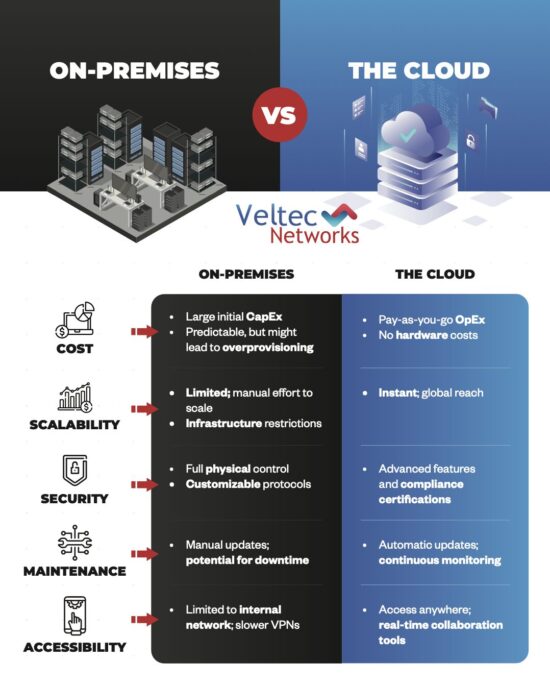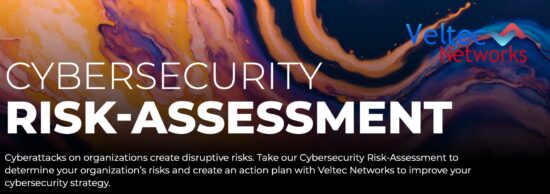Real Insights Into The Threats From Ransomware & Cybercrime
What may have seemed possible in the movies a few years ago is now the reality in cybersecurity. Cybercriminals are now more sophisticated than ever, and both large and small businesses are at risk. Furthermore, the nature of cybersecurity threats has changed; companies can no longer rely on basic security measures such as password protection and encryption to protect themselves.
What’s more, there is a significant imbalance in the demand and supply of cybersecurity professionals. In discussion with the Tech Republic, Tom Kellerman, a cybersecurity strategy expert, states demand for more than 3.5 million people to work in cybersecurity.
With these facts in mind, businesses must renew their understanding of ransomware and cybercrime. So, where does your business stand, and how can you prepare yourself?
What Is The New Cybersecurity Landscape?
The current space is punitive and hostile. Cybercriminals have scaled operations and shifted their mindset from burglary to home invasion. It’s no longer enough for hackers to acquire your intellectual information, money and financial details.
Hackers are going for home invasion, which means taking over your corporate environments and launching attacks from your environment against people who trust you. A cybersecurity breach now affects other stakeholders such as your customers, employees, board members, or constituents for government organizations.
These hackers can achieve massive feats because of:
- Organized cybercrime
- Political agendas
Unfortunately, private companies and government agencies are no longer dealing with small hacker groups. Instead, the current threats are organized cybercriminals with political allegiances. These groups are untouchable and often enjoy funding and protection from the governments.
In the United States, the most significant cybersecurity conflict is with Russia. Federal agencies speculate that Russia is in cahoots with local cybercriminals to strengthen political power by exploiting the technological vulnerabilities of the west. In 2018, the government continued an indictment against 12 Russian military intelligence officers for interfering with the 2016 Presidential elections.
The accused are guilty of gaining unauthorized access to computers of organizations involved in the 2016 presidential election and stealing information, releasing unauthorized documents, stealing identities, and attempting to commit money laundering.
In addition, the SolarWinds cyberattack stands as one of the most sophisticated attacks against American organizations. On December 13, 2020, FireEye published a report on malicious ransomware targeting a supply chain of SolarWinds IT products. While initial reports stated that the U.S commerce and treasury departments were under attack, investigations later revealed that more government agencies were vulnerable.
The home invasion was against SolarWinds, an IT software developer that produces IT management software for chief information officers (CIOs). As usual, SolarWinds pushed updates and patches to clients. But, unfortunately, malicious hackers found a weakness in SolarWind’s update for Orion IT.
Malicious actors manipulated the security vulnerability to install Sunburst malware in the SolarWinds network before gaining unauthorized access to information and controls. It’s estimated that approximately 18,000 of SolarWind’s customers are still susceptible to attack because of the malware. While federal agencies have executed measures to remove SolarWind’s software, it’s still unclear if the attack is part of a larger campaign.
Sophisticated cyberattacks from organized cyber criminals affect government agencies and businesses of all sizes. These criminals have the capacity and know-how to perform reconnaissance before launching an attack. What’s more, organized cybercrime groups perform continuous targeting until they find weaknesses they can exploit.
What Is The State of Supply and Demand of Cybersecurity Experts?
Unfortunately, the current cybersecurity space is limited in talent. As Tom Kellerman points out, there is a demand for more than 3.5 million cybersecurity professionals. Organizations are fighting for available professionals, with talent poaching becoming more common. Unfortunately, smaller organizations may be left out of the fight.
What’s more, there is an urgent need to convince cybersecurity experts, including hackers, to play defense instead of attack. Tom Kellerman points out that criminals serve a purpose, and it’s crucial to shift allegiances.
In addition, companies need to elevate the role of a Chief Information Security Officer (CISO). The CISO should report directly to the CEO instead of going through other officials to point out cybersecurity concerns. What’s more, companies need to include more cybersecurity experts on the boards.
What’s The Worst-Case Scenario For Businesses?
Even with the growing threat against organizations and individuals, company heads may often push aside cybersecurity concerns. As such, picturing the worst-case scenario helps push the need for critical cybersecurity measures. Cybersecurity is now a function of doing business rather than a business expense.
Plausible deniability is no longer a proper defense for business leaders, who may find themselves trapped in lawsuits and class actions for their failure to take all available measures to prevent breachers.
Hackers are now using your technological upgrades against you, your customers, and other stakeholders. An attack means a ruined business reputation, business loss, and possible company loss due to costly legal costs.
What Can You Do?
Popular defense measures such as firewalls, encryption, password protection, and antivirus software are inadequate against current cybersecurity threats. Relying solely on these protective measures leaves your business IT network open to exploitation. It’s advisable to take the following steps to boost your cybersecurity and protect your business against ransomware attacks.
- Proactively perform continuous threat monitoring in your networks to check for malicious activity and remove the threat as early as possible. Continuous threat monitoring uses technology to automate the detection, prevention, and mitigation of real-time threats against your organization.
- It’s crucial to increase the visibility across your IT infrastructure by integrating your network security capabilities with your end-point protection platform.
- Apply micro-segmentation to limit the accessibility and capacities of a malicious intruder in your networks. In short, it makes it harder for a hacker to access various points of your IT infrastructure without detection.
How To Protect Your Small Business
The current cybersecurity space is rife with threats that small businesses cannot ignore. However, the costs of hiring a CISO and a cybersecurity team are prohibitively high for smaller firms. For smaller companies, outsourcing cybersecurity needs to an expert firm is the best way to ensure cybersecurity while managing costs.
Don’t expose your business to malicious hackers. Instead, engage with Veltec Networks and protect your business from all the cyber threats and ransomware threats out there.






